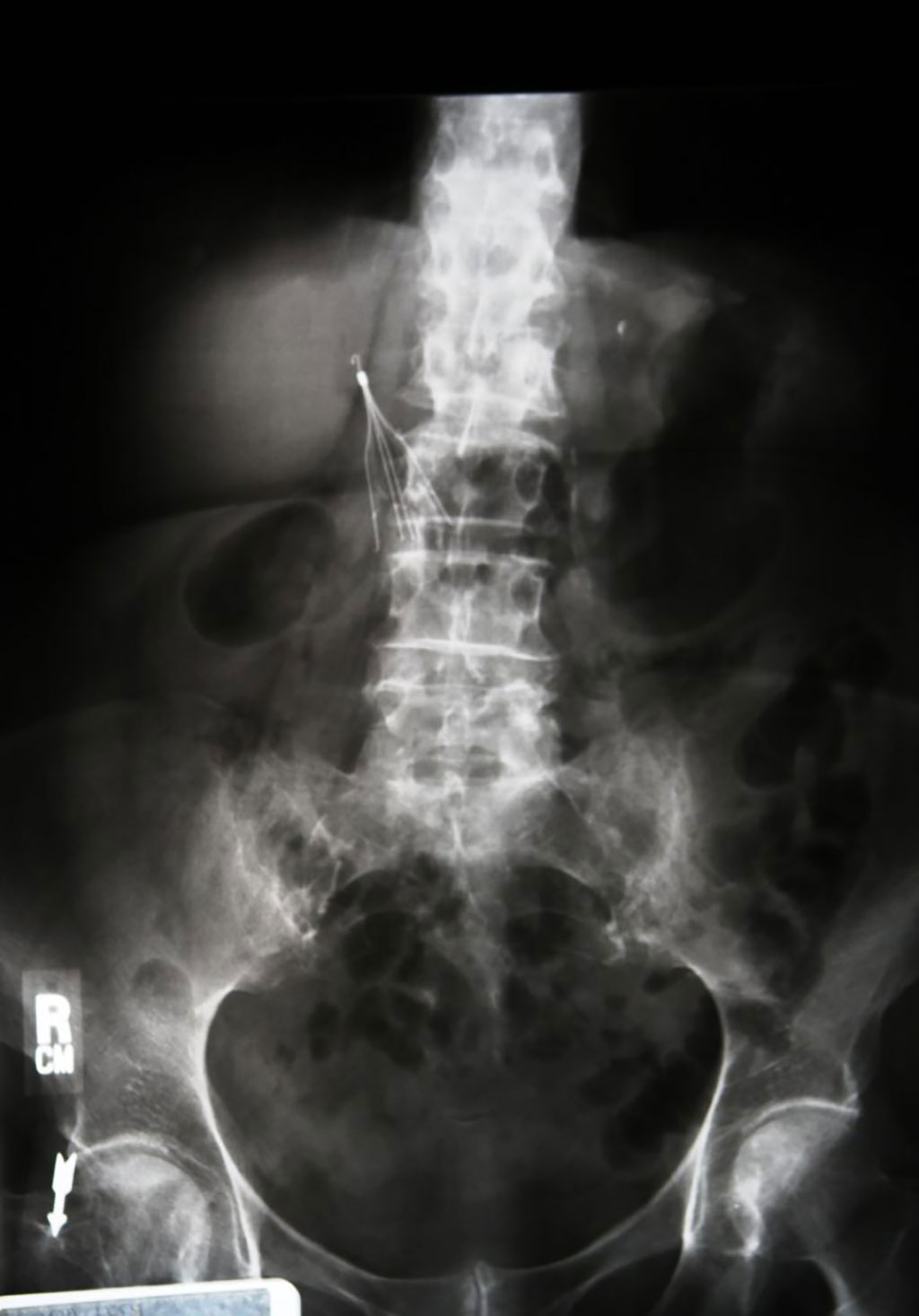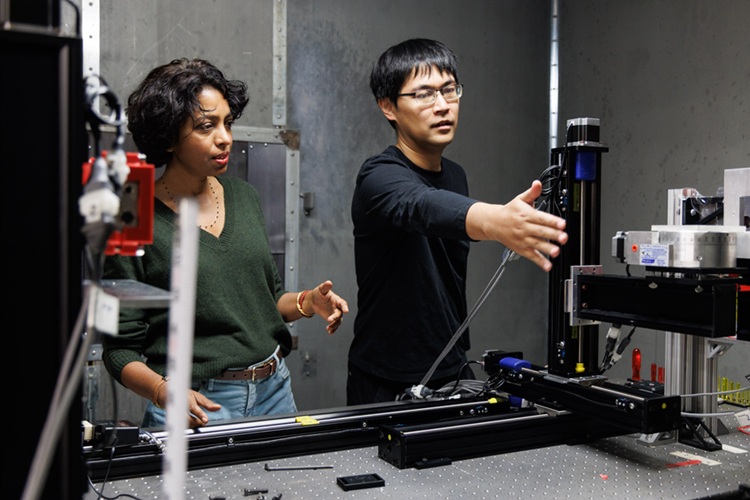Deep Learning Detects Overlooked IVC Filters on X-Rays Exams
|
By MedImaging International staff writers Posted on 16 Jun 2021 |

Image: A new AI algorithm can find IVC filters that go unnoticed (Photo courtesy of Shutterstock)
An artificial intelligence (AI) algorithm can be used to identify forgotten inferior vena cava (IVC) filters on radiography exams, according to a new study.
Developed at the University of California, San Francisco (UCSF, USA), the new algorithm was trained and tested on 5,225 abdominal radiographs from UCSF, including 1,580 containing an IVC filter. Of these, 70% were used for training, 15% were utilized for validation, and a further 15% were employed for testing. The algorithm was subsequenly tested on an external dataset that included 1,424 abdominal X-ray exams (including 573 with an IVC filter) from the University of California, Irvine (UCI; USA).
After analyzing errors by the algorithm, the researchers observed that false-negative failures included cases where much of the IVC filter was obscured by barium in the colon, as well as in cases where there was very low contrast between the filter and the background due to radiographic technique and body habitus. Other false-negatives included filters that were overlaid against a busy background, such as facet joints and skin staples. But overall, the algorithm yielded high performance on both the internal and external test sets. The study was presented at the Society for Imaging Informatics in Medicine (SIIM) annual meeting, held online during May 2021.
“Many filters are placed in the setting of trauma, where it's common for a patient to have the filter placed at a different hospital or a different healthcare system from the one where they receive their ongoing care,” said study presenter John Mongan, PhD. “There's an opportunity to improve patient health by increasing the number of these filters that are retrieved. Our object detection network yields highly accurate detection of IVC filters with excellent transferability to other institutions other than where it was trained.”
Since the invention of the permanent percutaneous IVC filter in 1973 and the retrievable IVC filter in the 1990s, its use has become a standard part of treatment for select patients with acute lower-extremity venous thrombosis who cannot receive anticoagulation. Placement of an IVC filter is thus frequently considered in trauma patients because of the high risk of VTE associated with traumatic injury and the risks of anticoagulation in this population. In recent years, the US Food and Drug Administration (FDA) has raised concerns about the safety of IVC filters, and some studies have indicated a temporal decrease in the use of this technology.
Related Links:
University of California, San Francisco
Developed at the University of California, San Francisco (UCSF, USA), the new algorithm was trained and tested on 5,225 abdominal radiographs from UCSF, including 1,580 containing an IVC filter. Of these, 70% were used for training, 15% were utilized for validation, and a further 15% were employed for testing. The algorithm was subsequenly tested on an external dataset that included 1,424 abdominal X-ray exams (including 573 with an IVC filter) from the University of California, Irvine (UCI; USA).
After analyzing errors by the algorithm, the researchers observed that false-negative failures included cases where much of the IVC filter was obscured by barium in the colon, as well as in cases where there was very low contrast between the filter and the background due to radiographic technique and body habitus. Other false-negatives included filters that were overlaid against a busy background, such as facet joints and skin staples. But overall, the algorithm yielded high performance on both the internal and external test sets. The study was presented at the Society for Imaging Informatics in Medicine (SIIM) annual meeting, held online during May 2021.
“Many filters are placed in the setting of trauma, where it's common for a patient to have the filter placed at a different hospital or a different healthcare system from the one where they receive their ongoing care,” said study presenter John Mongan, PhD. “There's an opportunity to improve patient health by increasing the number of these filters that are retrieved. Our object detection network yields highly accurate detection of IVC filters with excellent transferability to other institutions other than where it was trained.”
Since the invention of the permanent percutaneous IVC filter in 1973 and the retrievable IVC filter in the 1990s, its use has become a standard part of treatment for select patients with acute lower-extremity venous thrombosis who cannot receive anticoagulation. Placement of an IVC filter is thus frequently considered in trauma patients because of the high risk of VTE associated with traumatic injury and the risks of anticoagulation in this population. In recent years, the US Food and Drug Administration (FDA) has raised concerns about the safety of IVC filters, and some studies have indicated a temporal decrease in the use of this technology.
Related Links:
University of California, San Francisco
Latest General/Advanced Imaging News
- New Algorithm Dramatically Speeds Up Stroke Detection Scans
- 3D Scanning Approach Enables Ultra-Precise Brain Surgery
- AI Tool Improves Medical Imaging Process by 90%
- New Ultrasmall, Light-Sensitive Nanoparticles Could Serve as Contrast Agents
- AI Algorithm Accurately Predicts Pancreatic Cancer Metastasis Using Routine CT Images
- Cutting-Edge Angio-CT Solution Offers New Therapeutic Possibilities
- Extending CT Imaging Detects Hidden Blood Clots in Stroke Patients
- Groundbreaking AI Model Accurately Segments Liver Tumors from CT Scans
- New CT-Based Indicator Helps Predict Life-Threatening Postpartum Bleeding Cases
- CT Colonography Beats Stool DNA Testing for Colon Cancer Screening
- First-Of-Its-Kind Wearable Device Offers Revolutionary Alternative to CT Scans
- AI-Based CT Scan Analysis Predicts Early-Stage Kidney Damage Due to Cancer Treatments
- CT-Based Deep Learning-Driven Tool to Enhance Liver Cancer Diagnosis
- AI-Powered Imaging System Improves Lung Cancer Diagnosis
- AI Model Significantly Enhances Low-Dose CT Capabilities
- Ultra-Low Dose CT Aids Pneumonia Diagnosis in Immunocompromised Patients
Channels
Radiography
view channel
AI Detects Early Signs of Aging from Chest X-Rays
Chronological age does not always reflect how fast the body is truly aging, and current biological age tests often rely on DNA-based markers that may miss early organ-level decline. Detecting subtle, age-related... Read more
X-Ray Breakthrough Captures Three Image-Contrast Types in Single Shot
Detecting early-stage cancer or subtle changes deep inside tissues has long challenged conventional X-ray systems, which rely only on how structures absorb radiation. This limitation keeps many microstructural... Read moreMRI
view channel
Novel Imaging Approach to Improve Treatment for Spinal Cord Injuries
Vascular dysfunction in the spinal cord contributes to multiple neurological conditions, including traumatic injuries and degenerative cervical myelopathy, where reduced blood flow can lead to progressive... Read more
AI-Assisted Model Enhances MRI Heart Scans
A cardiac MRI can reveal critical information about the heart’s function and any abnormalities, but traditional scans take 30 to 90 minutes and often suffer from poor image quality due to patient movement.... Read more
AI Model Outperforms Doctors at Identifying Patients Most At-Risk of Cardiac Arrest
Hypertrophic cardiomyopathy is one of the most common inherited heart conditions and a leading cause of sudden cardiac death in young individuals and athletes. While many patients live normal lives, some... Read moreUltrasound
view channel
Wearable Ultrasound Imaging System to Enable Real-Time Disease Monitoring
Chronic conditions such as hypertension and heart failure require close monitoring, yet today’s ultrasound imaging is largely confined to hospitals and short, episodic scans. This reactive model limits... Read more
Ultrasound Technique Visualizes Deep Blood Vessels in 3D Without Contrast Agents
Producing clear 3D images of deep blood vessels has long been difficult without relying on contrast agents, CT scans, or MRI. Standard ultrasound typically provides only 2D cross-sections, limiting clinicians’... Read moreNuclear Medicine
view channel
PET Imaging of Inflammation Predicts Recovery and Guides Therapy After Heart Attack
Acute myocardial infarction can trigger lasting heart damage, yet clinicians still lack reliable tools to identify which patients will regain function and which may develop heart failure.... Read more
Radiotheranostic Approach Detects, Kills and Reprograms Aggressive Cancers
Aggressive cancers such as osteosarcoma and glioblastoma often resist standard therapies, thrive in hostile tumor environments, and recur despite surgery, radiation, or chemotherapy. These tumors also... Read more
New Imaging Solution Improves Survival for Patients with Recurring Prostate Cancer
Detecting recurrent prostate cancer remains one of the most difficult challenges in oncology, as standard imaging methods such as bone scans and CT scans often fail to accurately locate small or early-stage tumors.... Read moreImaging IT
view channel
New Google Cloud Medical Imaging Suite Makes Imaging Healthcare Data More Accessible
Medical imaging is a critical tool used to diagnose patients, and there are billions of medical images scanned globally each year. Imaging data accounts for about 90% of all healthcare data1 and, until... Read more
Global AI in Medical Diagnostics Market to Be Driven by Demand for Image Recognition in Radiology
The global artificial intelligence (AI) in medical diagnostics market is expanding with early disease detection being one of its key applications and image recognition becoming a compelling consumer proposition... Read moreIndustry News
view channel
GE HealthCare and NVIDIA Collaboration to Reimagine Diagnostic Imaging
GE HealthCare (Chicago, IL, USA) has entered into a collaboration with NVIDIA (Santa Clara, CA, USA), expanding the existing relationship between the two companies to focus on pioneering innovation in... Read more
Patient-Specific 3D-Printed Phantoms Transform CT Imaging
New research has highlighted how anatomically precise, patient-specific 3D-printed phantoms are proving to be scalable, cost-effective, and efficient tools in the development of new CT scan algorithms... Read more
Siemens and Sectra Collaborate on Enhancing Radiology Workflows
Siemens Healthineers (Forchheim, Germany) and Sectra (Linköping, Sweden) have entered into a collaboration aimed at enhancing radiologists' diagnostic capabilities and, in turn, improving patient care... Read more




 Guided Devices.jpg)














